How to Draw a Black Hole

Black Hole Drawings, the Science Behind the Art
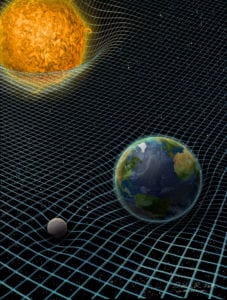
How do you draw a black hole? Today we're revisiting some of our favorite black hole drawings and looking at the science behind our tricks.
Einstein's theory of relativity helped create a framework for understanding the physical landscape of gravity—a place where large objects warp the surrounding space around them. In this view, spacetime is drawn as an endless trampoline, dented by planets, stars, and black holes.
The Black Hole Pit
This leads us to the black hole drawing we've become most accustomed to—the classic 'pit' of doom. Like a "Star Wars" Sarlacc pit, a black hole's steepness correlates with the chance of escape. As the walls' steepness increases, so does gravity. We can viscerally imagine a simple slip quickly turning into an unrecoverable slide into the abyss.
This classic rendition of a black hole is shown in our illustration of Sagittarius A at the center of our galaxy. It's a helpful way to imagine the S2 star coming dangerously close to the edge of the black hole.
But is there really a pit in the center of our galaxy? Yes and no. Astronomers have shown that there is a black hole as shown by the orbits of the blue stars that travel around it. (see our post about Dr. Ghez's Nobel Prize). But a pit? It's a helpful oversimplification.
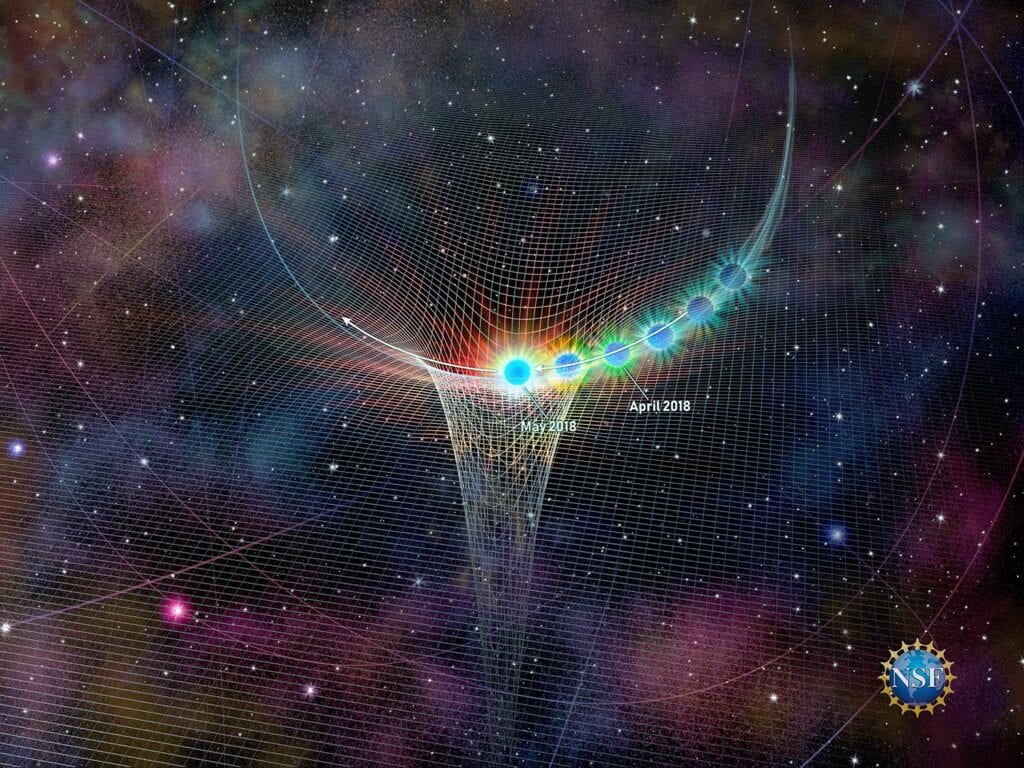
Black Holes to Worm Holes
Ok, so for now, let's continue the visualization of a black hole pulling the fabric of spacetime. Is there a bottom to the pit? Does it connect somewhere else? This is where wormholes come in and the possibility of connections to other dimensions. Current theory suggests that it may be possible but likely only for particles like photons.

If I Flew to the Center of Our Galaxy, What Would We See?
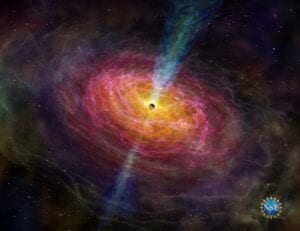
So, as cool as it would be to see a galactic Sarlacc pit at the center of our galaxy or tubes leading to other galaxies, it's not going to happen. The classic 'fabric of spacetime' drawing is a visual trick, and not what you would actually see. And that makes sense, right?
If you really think about it, drawing something that not even light escapes from, is near impossible. What we're actually illustrating, is the swirl of matter that is swirling around a black hole. So, what we'd really see, is something closer to the visualization shown in the movie "Interstellar."
We'd see a swirling mass of superheated plasma, and a jet of energy emerging from its center. At its center, the black hole itself would look like a sphere of shadow. What we think of as the black hole, is actually the event horizon—the point where light cannot escape gravity.
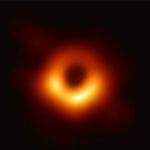
The First Actual Image of a Black Hole!
In fact, astronomers released the first image of a black hole in 2019. You might ask, why do we keep drawing them, if there is a REAL image. Well, if you take a look, the image is lacking a lot of detail. That doesn't mean it's not amazing, it is! But as illustrators, we can clarify details, and take additional simulations and knowledge from physicists and astronomers to add to viewers' understanding.
For example, below is an accompanying illustration that we created to accompany the Event Horizon Telescope (EHT) news, explaining why the image has the signature 'donut' shape.
Why Is a Black Hole Donut Shaped?
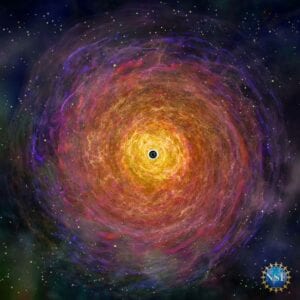
Looking at our EHT image, we can imagine the ring as the swirl of matter around the black hole. To understand it even better, it helps to understand what happens when photons approach the event horizon. As photons near a black hole, one of three things happen:
- The photons get too close to the point of no-return, and get sucked in.
- The photons are far enough away that they can escape the black hole's gravity, but their path is bent. They're able to continue on their way, albeit off-course.
- The photons narrowly escape falling in, but they're close enough that they are pulled into orbit around the black hole. So although they are there still, we the viewer never see them.
What does this mean to us, the viewer? From any viewing point, there will always be a center of darkness. This is because the photons that would travel to us are either bent or sent in orbits around the black hole. The light that we do see, is from photons that were originally traveling in a slightly different direction, but have been bent around the event horizon.
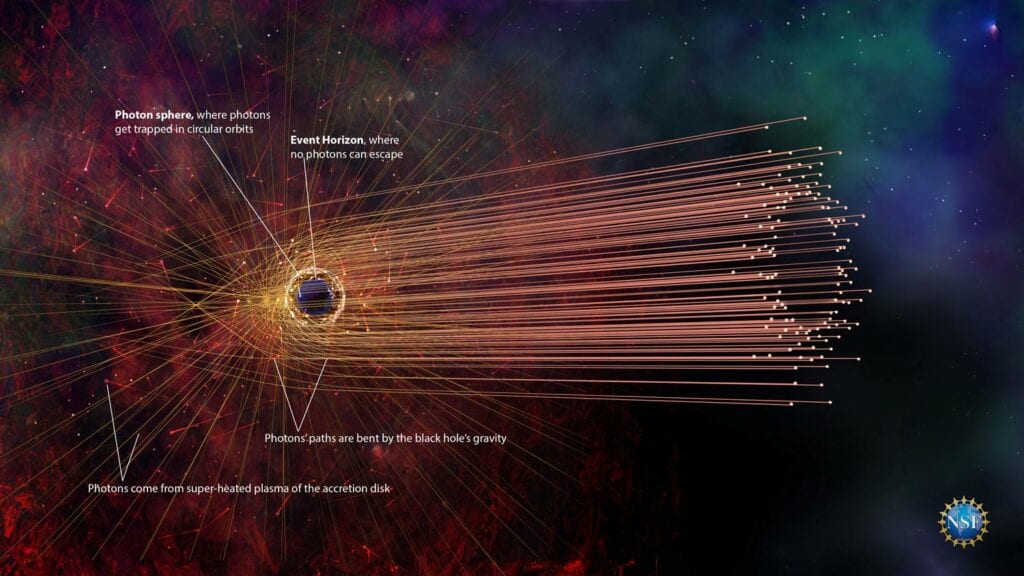
Black Hole Photon Animation
Source: https://sayostudio.com/black-hole-drawings/
0 Response to "How to Draw a Black Hole"
Post a Comment